Video Art
On the Shores of…
Between history and historiography lies a careful process of selection and representation. A historian identifies a moment in time to write about. This moment is researched and then represented in writing; eventually, fragments of this work trickle down to schools, universities, and ultimately into our everyday lives. Through such narratives, we come to understand our place in the world and its context. In an age where we are all too well connected—amidst the myriad rhizomatic networks that bind us—the dissemination and totalization of information unfold at an unprecedented pace.
Yet these very networks, which facilitate access to people and information, have opened a different space: an alternative sphere where new worlds can be worlded. They allow artists and researchers to contest the hegemonic tales that be and respond instead with a speculative eye on the horizon. The artists featured in Art Central 2025’s video program share this trait; through forays into the moving image, their transnational bring us to an everchanging boundary—and we find ourselves standing on the shores of a future that is yet to arrive.
Aaditya Sathish
Curator
Julieta Aranda (b. 1975, Mexico)
Stealing One’s Own Corpse (An Alternative Set of Footholds for an Ascent into the Dark) Part 3: Politics Without Oxygen, 2019
Single-channel video
09’35”
Stealing One’s Own Corpse (2019) is the third part of a series of video essays that examine the human condition in the 21st century, in light of ecological collapse, extractivisms, profound inequalities, and the revival of the space race and technical development programs world-wide. The film looks critically at the importance that is given (or not) to life in the process of producing the future, considering the current infrastructural challenges, technological speed, and environmental challenges.
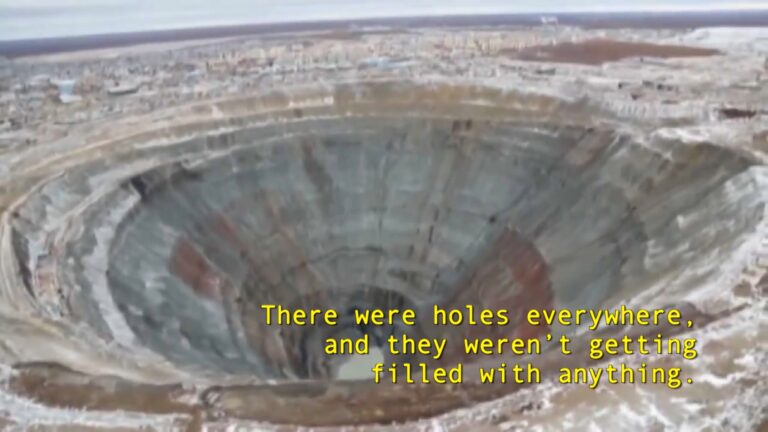
Tanatchai Bandasak (b. 1984, Thailand)
Faucet, 2023
Single-channel video
01’56”
The mattress had rested in an abandoned building for more than two decades. A video captured the mattress along with the sound of a faucet being turned back on.
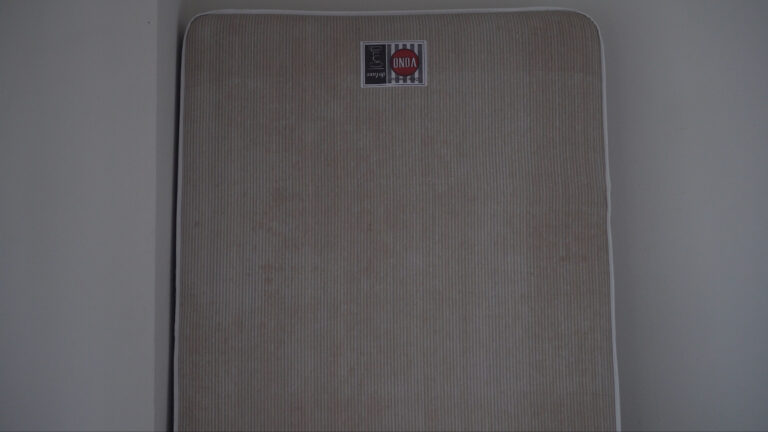
Soumya Sankar Bose (b. 1990, India)
Things We Lost Last Night, 2024
Three-channel video
59’00”
Things We Lost Last Night, a three-channel film, delves into the artist’s journey to piece together the forgotten traces of his mother’s mysterious disappearance in 1969, when she was nine years old. Set against the political unrest of West Bengal, the film unravels her interior monologue—an enduring tapestry of loss, trauma, and imagination. Her recollections bring back the memory of her father who succumbed to his grief in his process of searching for his daughter. A one-eyed old woman speaks ceaselessly into the void. Religious scriptures crumble to dust as natural disasters wash away ancient temples. The hum of a forlorn woman and a television set, trapped in time, slips into oblivion. The corridor stands still, waiting for the doorbell to ring. The possibilities of an unforeseen future swing from the womb of the past. The artist continues to search for coherence in his mother’s fragmented narrative.
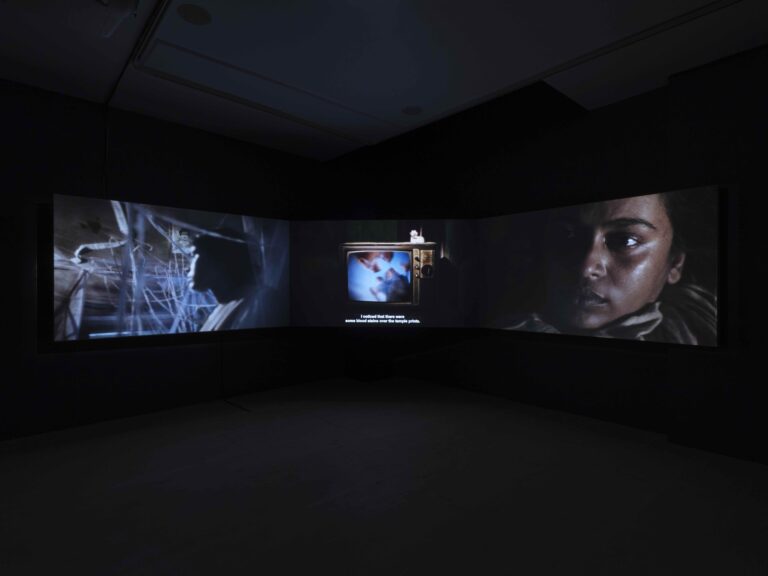
Shu Lea Cheang (b. 1954, Tainan)
Virus Becoming, 2022
Single-channel video
06’30”
Derived from Cheang’s full length feature film UKI (2023), Virus Becoming (2022) is a 3D illustration for the birth of UKI the virus. Taking the plot from UKI, Virus Becoming follows the trajectory of a defunct humanoid Reiko who was deemed redundant and dumped as a piece of etrash at the Etrashville by Genom Corporation. Reiko unpacks their electro-body parts in an attempt to reboot themselves back to existence. Encountering the Etrashville’s inhabitants – the trans-mutants, the hackers, the coders, the migrants, the refugees and the native labourers, Reiko goes through a series of trans-formations, coding and coded, and finally emerges as UKI the virus. Virus Becoming departs from gender binary and deviates into transgenic discourse. To live with the virus is to trans-mutate our bodies, teleporting our viral bodies into a brave new Eco-System.
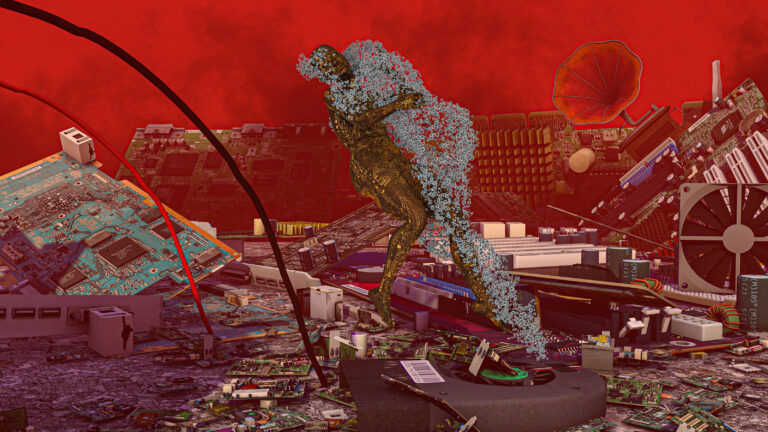
Winsome Wong Dumalagan (b. 1994, Hong Kong / Philippines)
The Vault of the Cloven Void, 2025
Three-channel video
19’00”
In The Vault of the Cloven Void (2025), fragments of different times and places accumulate—captured sporadically, entwined with the act of navigating online satellite maps. These fragments seek to reconstruct a space-time: chaos or void, where light distinguishes day from night, the vault separates sky from earth, where places and species emerge and exist—discovered, recorded, claimed, built, demolished, plundered, scattered, and perhaps, reconstructed once more. Civilization unfolds from the depths of caves to the hollowed remains of vacant cities. The cave paintings of the past have become images woven from digital pixels, waiting to be rediscovered in the future as testimonies of a vanished world. A drone, like a swift-flying bird, captures every portrait before its eyes, feeding an ever-expanding database—one that, for many, remains invisible. Massive structures in desolate wastelands were once permeated with the hopes for the future, yet could be once again swallowed up by nature’s reclamation. Walls and borders have risen where the vineyard’s fallen fences once lay. All within has been segregated and dispersed, and the void, once without form, has become a distant and untouchable faith.
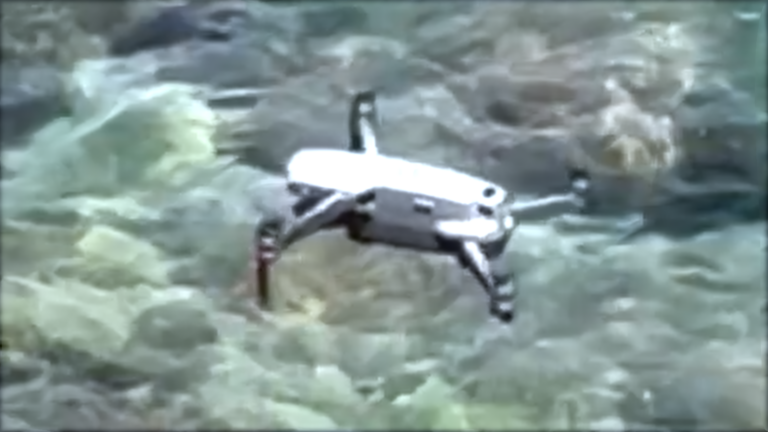
May Fung (b. 1952, Hong Kong)
She Said Why Me, 2016
Single-channel video
09’00”
She Said Why Me reflects the artist’s experience as a woman in the city. The video follows two casually dressed women in T-shirts and loose-fitting pants as they move through various urban settings. One woman is often positioned at the center of the frame, her movements fluid—almost like dancing or swimming—yet she remains grounded. Their gestures convey the ways they navigate their lives within the cityscape.
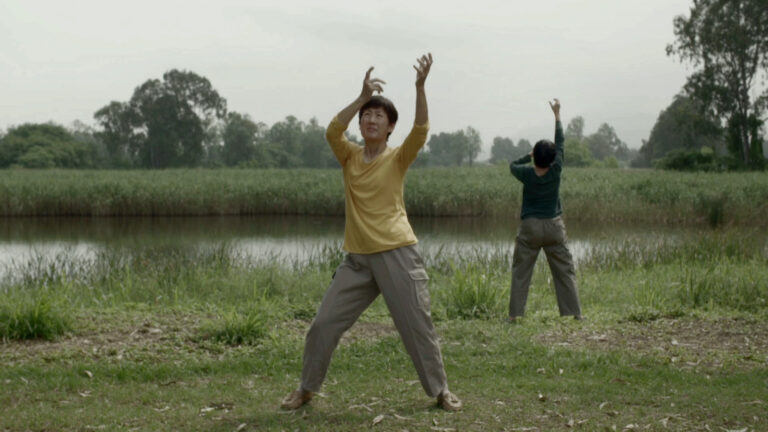
Kwan Sheung-Chi (b. 1980, Hong Kong)
The fifth toe (or “You can have what’s left of mine.”), 2015
CRT TV installation
00’44”
The fifth toe (or “You can have what’s left of mine.”) is a cruel video that records Kwan Sheung Chi cutting off his pinky toe. One sees a bare foot stepping into the scene, but only to realise later that the pinky toe is only cut off from a photo of it. Extremely corporeal for Kwan, the work was originally made for the exhibition “Well, you can have what’s left of mine” that took place in Taipei in 2015. In a text composed by Kwan, he traces the departure of a certain K: “In the room there are a lot of things K didn’t take away when K left…..the dream without a name left in my memory,.. K told the story in great detail, does K still remember what he has seen.
At last I saw the hands in the clock moving slowly XXXX I am no longer in the room…”
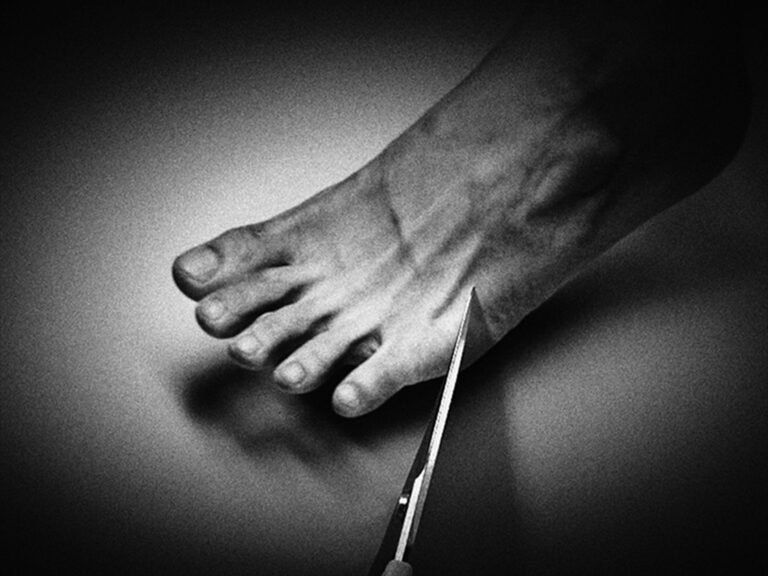
Kary Kwok (b. 1964, Hong Kong)
You Don’t Know Me, But…, 1998
CRT TV installation
00’29”
An early experiment, the 29-second-long film depicts Kary Kwok in a warehouse. He centres his face to the camera and lets out a milky liquid from his mouth. The liquid proceeds to fill the frame, at which point the video cuts.
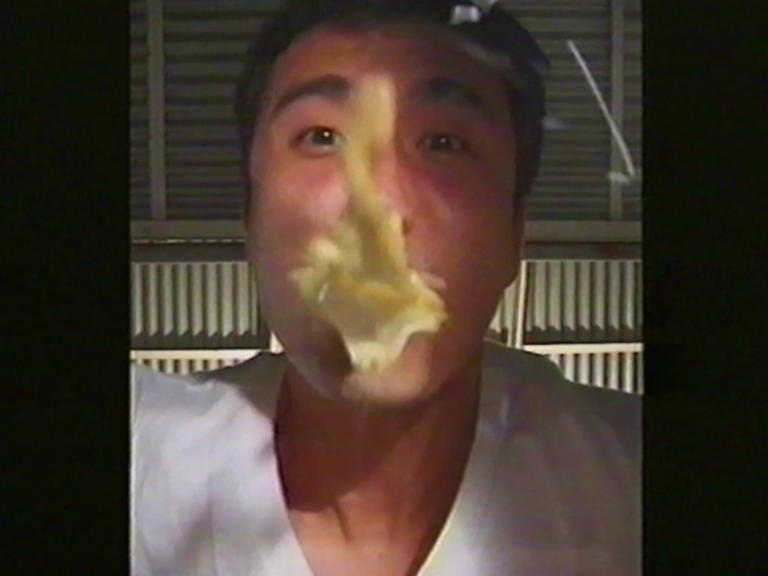
Sheng-Wen Lo (b. 1987, Kaohsiung)
The March of the Great White Bear, 2017
Single-channel video
08’00”
“What is this polar bear doing?”
The video depicts captive polar bears, their behaviours and their artificial habitats. The work is not about polar bears but, by focusing on a single species, aims to explore the roles and dilemmas of animal captivity programs.
The robotic movements are based on the “stereotypic behaviours (endless repetition of a fixed sequence of movements)” of polar bears in captivity, recorded in 17 enclosures in Europe and China. In ethological studies, these behaviors are often linked to limited environmental conditions and psychological stress, serving as a warning sign of maladaptation. However, it is important to note that the presence of stereotypic behaviors does not necessarily indicate poor current living conditions; rather, they may result from past environments the animals have previously inhabited.
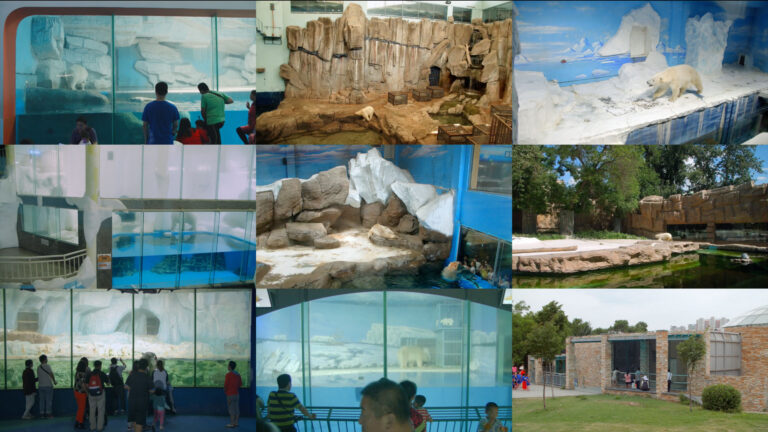
Jolene Mok (b. 1984, Hong Kong)
Happiness Hill, 2015
Three-channel video
14’06”
What we see here is a fabricated screen space of an existing landscape. This video concludes the act of returning to the same spot on weekdays for four consecutive weeks in the autumn.
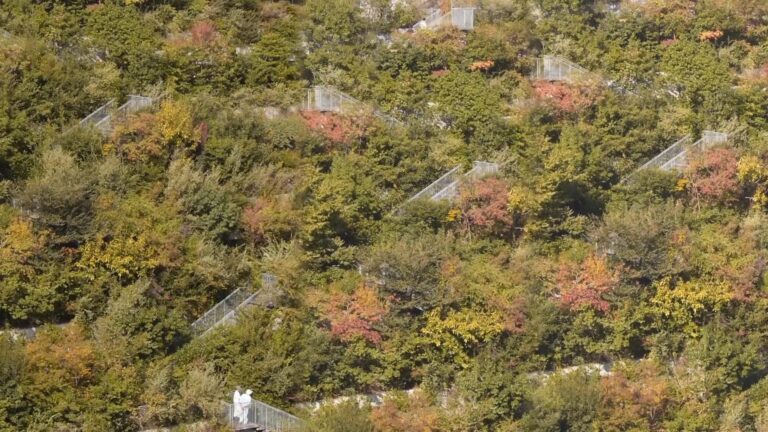
Ellen Pau (b. 1961, Hong Kong)
Drained, 1988
CRT TV installation
01’20”
Drained is a documentation of a performance by Hiram To. Each video in the Drained series can be seen as individual works, yet they are conceptually similar in that they were all generated from an idea that was inspired from the Hong Kong streetscape. The idea expanded into binary concepts, such as the real and the constructed, the exposed and the masked, the material and the immaterial, the speakable and the unspeakable.
In the piece the camera is set up at one end of a corridor with fire approaching the camera from the opposite end.
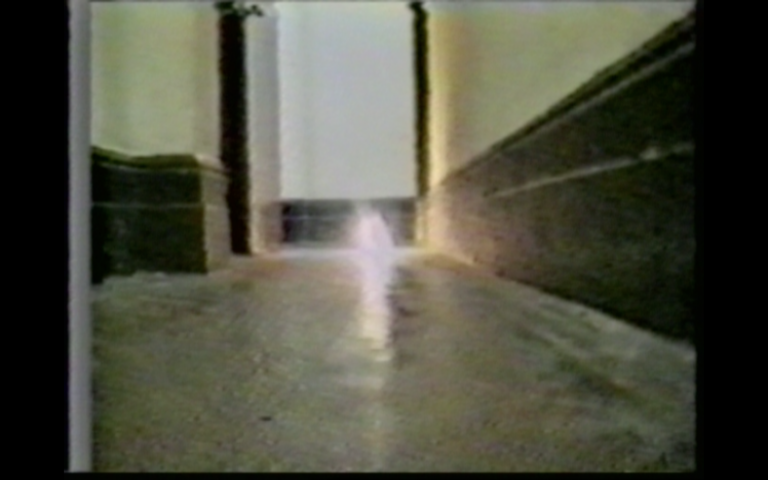
Charmaine Poh (b. 1990, Singapore)
What’s softest in the world rushes and runs over what’s hardest in the world, 2024
Single-channel video
14’30”
What’s softest in the world rushes and runs over what’s hardest in the world (2024) is a glimpse of queer parenthood in Singapore, where such families are illegitimate under the eyes of the law. Like Kin, the hybrid documentary film combines interview material with a constructed communal space for play and imagination. The film’s title is taken from Ursula K. Le Guin’s rendition of the Dao De Jing and refers to the dichotomy of water and stone. By gathering sensibilities of the natural world, Eastern cosmology, and interdependence. The work presents queerhood as an open field of possibility, one brimming with life that is to come.
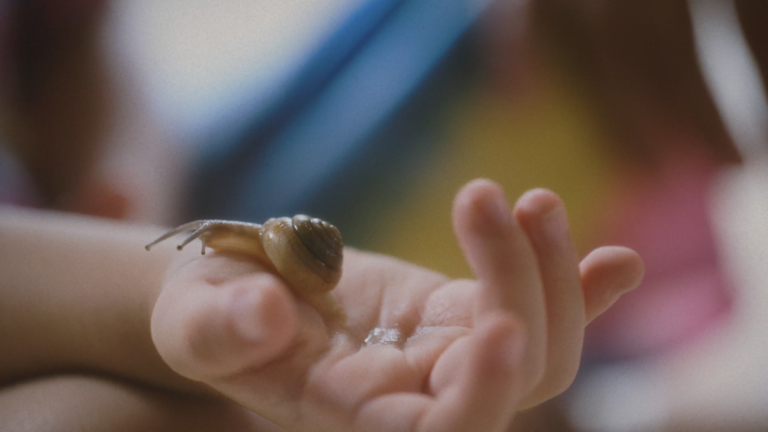
Raqs Media Collective (formed 1992, India)
The Bicyclist Who Fell Into a Time-Cone, 2023
Single-channel video
25’05”
Commissioned by Jencks Foundation at The Cosmic House, United Kingdom
The Bicyclist who fell into a Time-Cone oscillates between fact and fiction while hovering over the year 1980. It was a crepuscular time. A time of thresholds and transience. The memory of a bicyclist, sitting still, holding on to the handlebars, watching an aeroplane spiral down from the sky over Delhi to a crash, remains vivid. The descent of that aircraft was a turn in time, a move along a spiral, a bracket opening and closing like a pause between years of tumult and upheaval. This bracket, this pause, left a significant mark on our collective imaginaries, even though it also felt as if nothing much happened that year.
As a year that didn’t quite break the headlines, it was also the year in which a different visual and optical sensibility, tied to the increasing presence of the video image and its slight ‘parallax’ began to make itself visible. That slight but significant sensory disjunction, the mis-registrations of the new video image, also marks the sensation of watching time simultaneously stand still and spiral out of control. The Bicyclist Who Fell into a Parallax Time-Cone is an investigation into the optics of this strange and specific sensation of time, which has become second nature since 1980. It is a time traveling search, aboard an imagined and remembered bicycle, pedalling into that pause between turbulences, that lurks in every year. It’s as if there was/is a 1980, hidden, in every year. Shot in New Delhi’s hinterland, places of wilderness in-between and at the edge of other places, it sees Raqs Media Collective experiment with new visual textures achieved through nesting, embedding, and juxtaposing contemporary footage with found archival images, some of which have been sourced from Jencks travels in India in the 1980s. This polyphony of visual registers is accompanied by a single voice narration; a monologue about time, memory, and history that lapses between scales of temporality and implies a spectral plurality of time. The film’s main protagonist is the figure of the bicyclist whose circular and repetitive journey invokes an explorative and meditative mood. Using temporal and geographical zooms, shifts and overlays a contemplative landscape is created, at once personal and public.
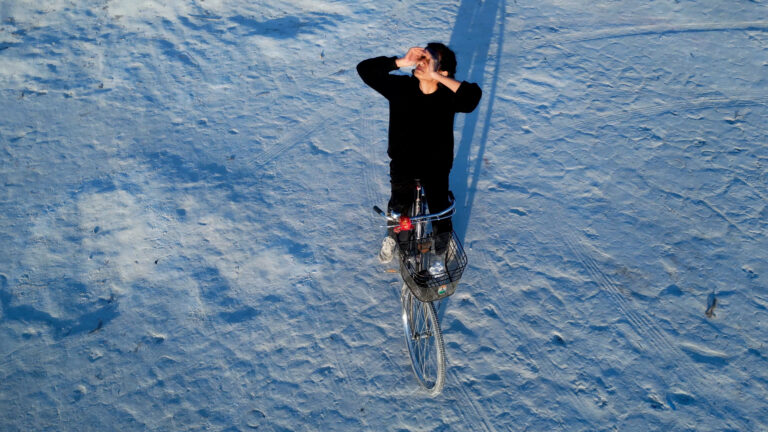
Alice dos Reis (b. 1995, Portugal)
Our Lady Who Burns, 2024
Single-channel video
08’19”
Portugal’s Serra da Gardunha is a mountain known for the paranormal. Where before it was revered as a site of saintly apparitions, nowadays it is known for mysterious light sightings, with rumours of a UFO hangar hidden inside it. Atmospheric and dream-like, Our Lady Who Burns guides us through this mountain and an intergenerational lore of infatuations. In parallel, two friends lament the pregnancy of their old cat, speculating on whether the mystical energy of the mountain might be able to interrupt its gestation. Shot on 16mm, Our Lady Who Burns is a voyage through a biographical landscape, in which the presence of the otherworldly, the geology of the territory, and a biography of unwanted bodily gestation are expressed through acts of cinematic apparitions.
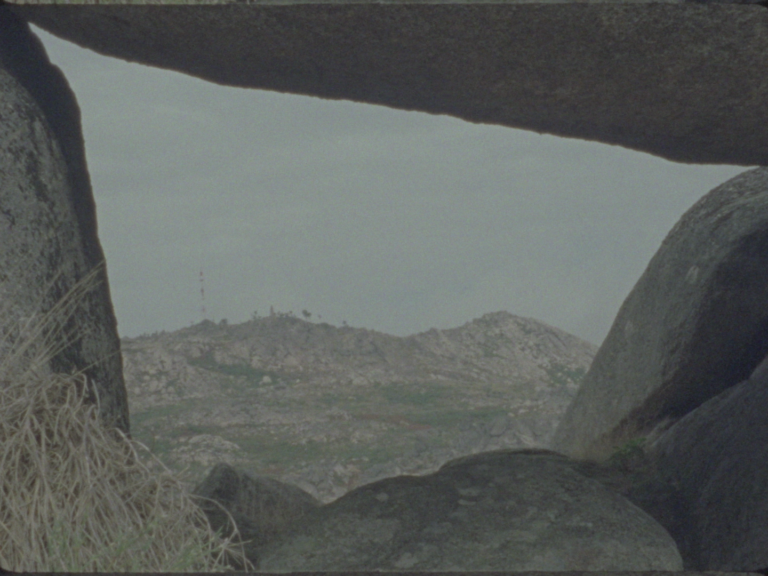
Riar Rizaldi (b. 1990, Indonesia)
Mirage – Eigenstate, 2024
Single-channel video
30’00”
The second episode, Mirage – Eigenstate (2024), weaves together analogous investigations into the nature of reality, positioning Western science as just one methodology among many in a constellation of pluralistic worldviews. The film explores different interpretations of reality, from Sufi mysticism and monorealism to theories of quantum mechanics. Edited in the style of American astronomer and planetary scientist Carl Sagan’s 1980s television show, Cosmos, which sought to explain the origin of life and the fourth spatial dimension, Mirage – Eigenstate references scientific mass communication, where complex concepts are described in straightforward ways, often through images.
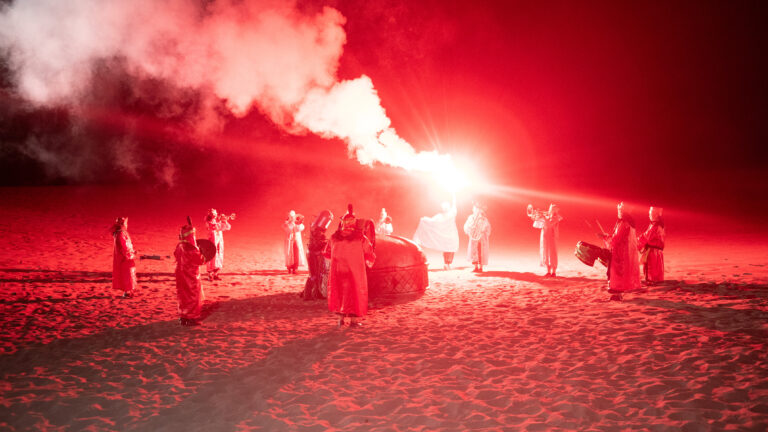
Akeroyd Collection
The Video Art programme will feature a curated selection of works from Akeroyd Collection, the moving image facet of the collection of Shane Akeroyd, a Hong Kong-based philanthropist and moving-image champion. Presented for one hour each day of the Fair, visitors can experience an exclusive showing of moving image-based works at Cinema Central. Akeroyd Collection operates to make the film and video work in the collection available through a dedicated website, film screenings, and loans to international arts institutions.


